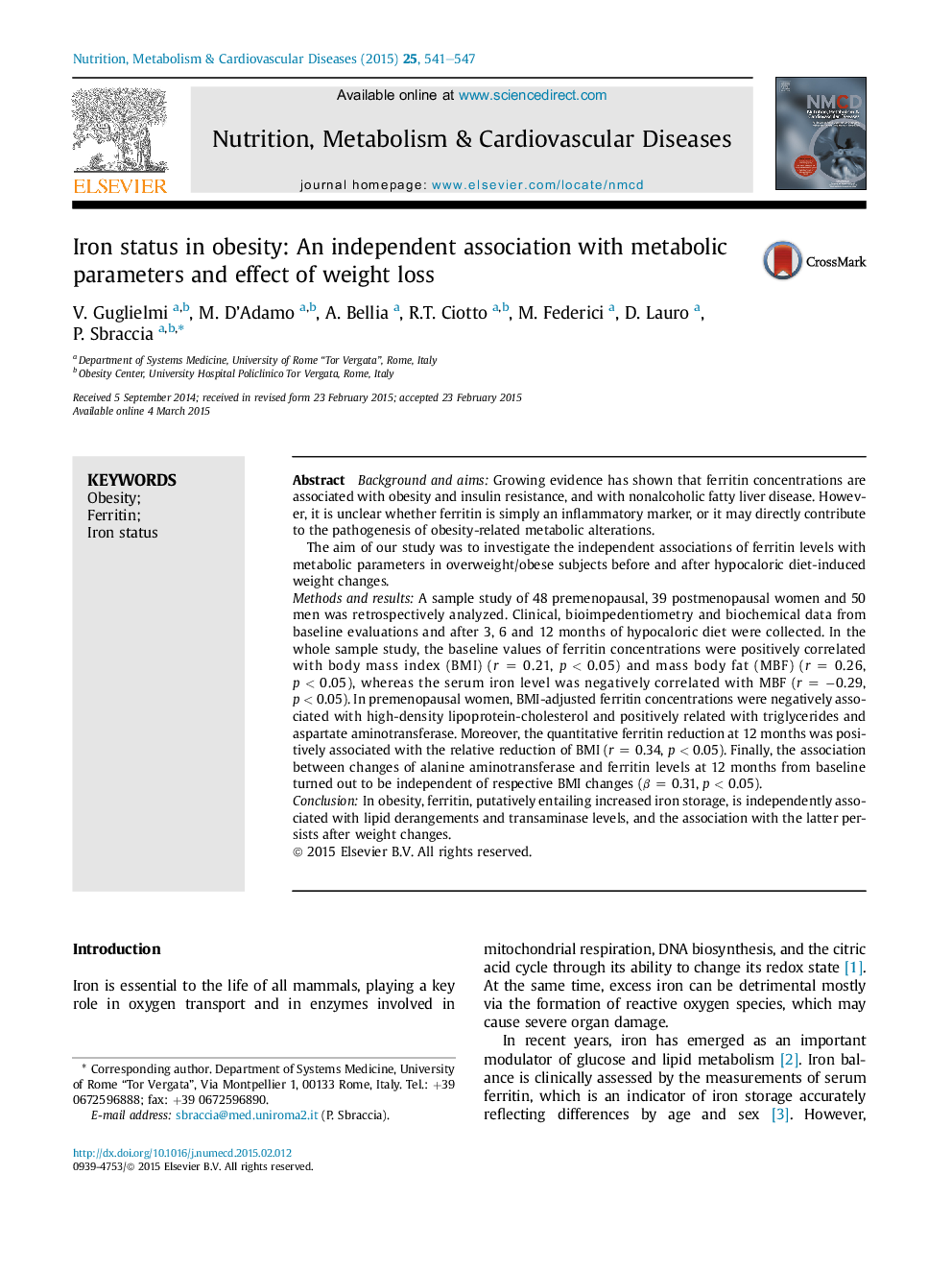| کد مقاله | کد نشریه | سال انتشار | مقاله انگلیسی | نسخه تمام متن |
|---|---|---|---|---|
| 5996582 | 1180683 | 2015 | 7 صفحه PDF | دانلود رایگان |
- Ferritin concentration were positively correlated with body mass index.
- Ferritin decrease was positively associated with the relative reduction of BMI on hypocaloric diet.
- Ferritin levels were associated with HDL, triglycerides and transaminase independent of adiposity.
- The association between ferritin and transaminase levels persisted after weight changes.
Background and aimsGrowing evidence has shown that ferritin concentrations are associated with obesity and insulin resistance, and with nonalcoholic fatty liver disease. However, it is unclear whether ferritin is simply an inflammatory marker, or it may directly contribute to the pathogenesis of obesity-related metabolic alterations.The aim of our study was to investigate the independent associations of ferritin levels with metabolic parameters in overweight/obese subjects before and after hypocaloric diet-induced weight changes.Methods and resultsA sample study of 48 premenopausal, 39 postmenopausal women and 50 men was retrospectively analyzed. Clinical, bioimpedentiometry and biochemical data from baseline evaluations and after 3, 6 and 12 months of hypocaloric diet were collected. In the whole sample study, the baseline values of ferritin concentrations were positively correlated with body mass index (BMI) (r = 0.21, p < 0.05) and mass body fat (MBF) (r = 0.26, p < 0.05), whereas the serum iron level was negatively correlated with MBF (r = â0.29, p < 0.05). In premenopausal women, BMI-adjusted ferritin concentrations were negatively associated with high-density lipoprotein-cholesterol and positively related with triglycerides and aspartate aminotransferase. Moreover, the quantitative ferritin reduction at 12 months was positively associated with the relative reduction of BMI (r = 0.34, p < 0.05). Finally, the association between changes of alanine aminotransferase and ferritin levels at 12 months from baseline turned out to be independent of respective BMI changes (β = 0.31, p < 0.05).ConclusionIn obesity, ferritin, putatively entailing increased iron storage, is independently associated with lipid derangements and transaminase levels, and the association with the latter persists after weight changes.
Journal: Nutrition, Metabolism and Cardiovascular Diseases - Volume 25, Issue 6, June 2015, Pages 541-547
